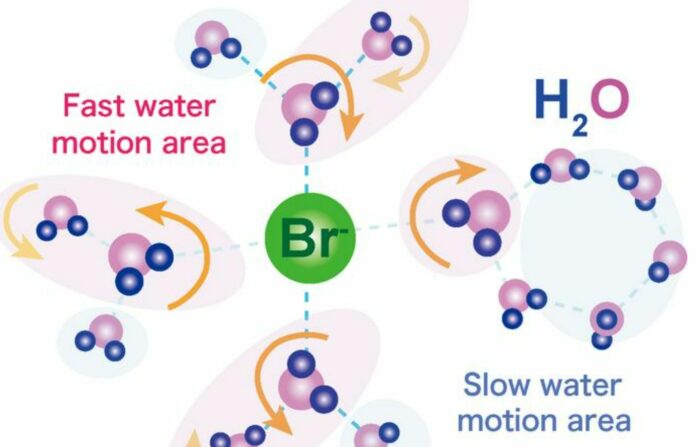New research from Osaka University reveals how bromide ions stimulate changes in the nature of semiclathrate hydrates.
Scientists at Osaka University employ neutron scattering to capture the movement of water molecules within the framework of semiclathrate hydrates.
Grasping the behavior of water molecules within proton-conductive materials is key to both understanding their properties and maximizing their potential uses. This necessitates rapid observation to identify changes in water movement.
Researchers from Osaka University have scrutinized the structure of semiclathrate hydrate crystals using quasi-elastic neutron scattering (QENS). Their intriguing findings have been shared in the journal, Applied Physics Letters.
Semicalthrate hydrates are unique as they have water molecule structures that host other molecules or ions, known as ‘guests’, within their structures. The introduction of different ‘guests’ allows the framework’s properties to be controlled and tailored to meet specific needs.
It’s noteworthy, however, that the top-performing proton conductors are often intensely acidic solutions, making them challenging to handle. Consequently, there’s a demand for solid electrolyte alternatives. Tetra-n-butylammonium bromide (TBAB) semiclathrate hydrate has been identified as a potential solid electrolyte, but the mechanism underpinning its performance hasn’t been fully understood.
The research team examined the dynamics of water molecules in TBAB semiclathrate hydrate using QENS. This enabled them to capture water molecule movements over much shorter time frames than has previously been possible, revealing a more defined understanding of the phenomena.
“The transfer of protons in the semiclathrate hydrate is suspended by the water molecules,” adds the study’s leading author, Jin Shimada. “The way the water molecules then reorient—their reorientation motion—then tells us about what might be affecting the conduction.”
QENS demonstrated that water molecules within the crystal reorient themselves extraordinarily quickly, much faster than previous measurements have shown. Interestingly, the energy required to instigate this change aligns with that necessary to break a hydrogen bond, the kind of interaction that occurs between the ‘guest’ ions and the water molecules.
The prevalent theory is that the large bromide ion, a component of TBAB, stimulates the water to behave similarly to how it would around bromide in an aqueous solution.
“The insight we have gained into TBAB semiclathrate hydrate provides an excellent grounding for future innovation,” remarks the study’s senior author, Takeshi Sugahara. “We believe the findings will contribute to the development of batteries and thermal storage materials.”
Source: 10.1063/5.0157560
Image Credit: 2023, Shimada et al.
